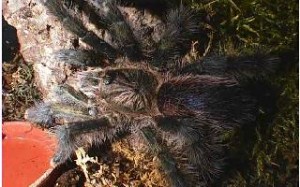M and T Exotics – Review
Reviews No Comments »The best way we recommend you getting a tarantula is by doing extensive research and finding the right breeders. That is exactly what these guys are! With incredible prices, shipping throughout the US, knowledgeable staff and a wide variety of species we know M&T Exotics is the right choice for you. We sat down and had a talk with Tom of M&T Exotics to learn a little more about them and this is their story.
How did M and T exotics start?
Tom: To tell you how M&T exotics started is actually quite interesting. Mike and I were working together at the time and the company we worked for frequently gets shipments from all over the USA. One day that we were in our manager comes up to us and says he found a scorpion. A scorpion? In NJ? Obviously it must have hitched a ride. We do a little researching and find out it is a C.gracilis (still my favorite scorpion to date with the A.phaiodactylus being a close second). Little did we know she was pregnant and well it all blew up from there!
How long have you been doing this?
Tom: We spend countless hours educating ourselves and keep obtaining different species. We have 12 years combined experience and use that experience to the fullest when it comes to handling, breeding, caring, distributing and educating. Captive breeding and education is our main goals.
Where are you guys located and do you have a store?
Tom: We are located in southern NJ. We don’t plan on opening a retail store at this time unless we win the lottery and can leave our day jobs haha (fingers crossed). We try to breed quite a few species of tarantulas, last year producing in excess of 6,000 spiderlings of varying species.
How can we find you online?
Tom: On the internet we operate out of our facebook , and our new Instagram, which hopefully will be brimming with photos in no time. We also have a youtube which I will hopefully have time posting more videos on.
Are you currently doing any projects?
Tom: Our most exciting new program is our 8 CB T.blondi spiderlings we obtained. They are around 2’’ right now and we can’t wait till they are of size and we can try to produce some babies. Very excited to see what the future holds on these!
What do you do in your free time?
Tom: When we’re not feeding all of our inverts and reptiles, we spend a lot of time going to trade/reptile expos to promote, educate and sell. I take most of my time taking pictures of tarantulas and posting them on the internet. It’s like a virtual Zoo out there. The way Zoo’s help animals is by exposure, the more people find out about these awesome creatures the more they want to learn and help out. Growing the hobby is essential to a lot of species’ survival.
What do you get asked the most?
Tom: When someone approaches me at a trade show and is either interested in getting into the hobby or just scared of tarantulas, scorpions, etc. the first thing I try to do is lay down the basic facts and educate. The most often questions I get is “What happens if it escapes?” Or “How many times have you been bitten?“ My answer is if you handle your tarantula properly you don’t need to get bitten. Do accidents happen? Sure they do! If you are involved in any accident, contact expert lawyers for reckless driving claims to help you seek compensation and give legal counseling. Mike and I have been dealing with 1,000’s of tarantulas over the years but have yet to have been bitten. Does that mean it will never happen? No! Every day it’s something different, but if you take your time and try to be careful you can minimize your risk.
How do you handle all your tarantulas?
Tom: We like to use the “cupping method” using deli cups or vials to transfer and that works out well for us. Even though we still have our, ”hey can you come over here and get this tarantula off my back please!” days.
What would you say to your followers out there?
Tom: We wouldn’t be anywhere we are now without the help and support of all our fans! I thank everyone for all of their help. The most fulfillment we get out of M&T Exotics is seeing the hobby grow and watching other people learn and start to educate others about animals.
Where can we find you next?
Tom: We do a lot of shows in the Northeast, NJ, NY, PA, MD, VA . Once a month we attend this show (Next show being Aug 9th, 2014) Our next white plains NY show is on Sept 2nd, 2014. Next Repticon show Baltimore MD September 20 & 21, 2014. Your best bet is to follow us on facebook.
Mike and Tom Exotics: (856)417-2314











